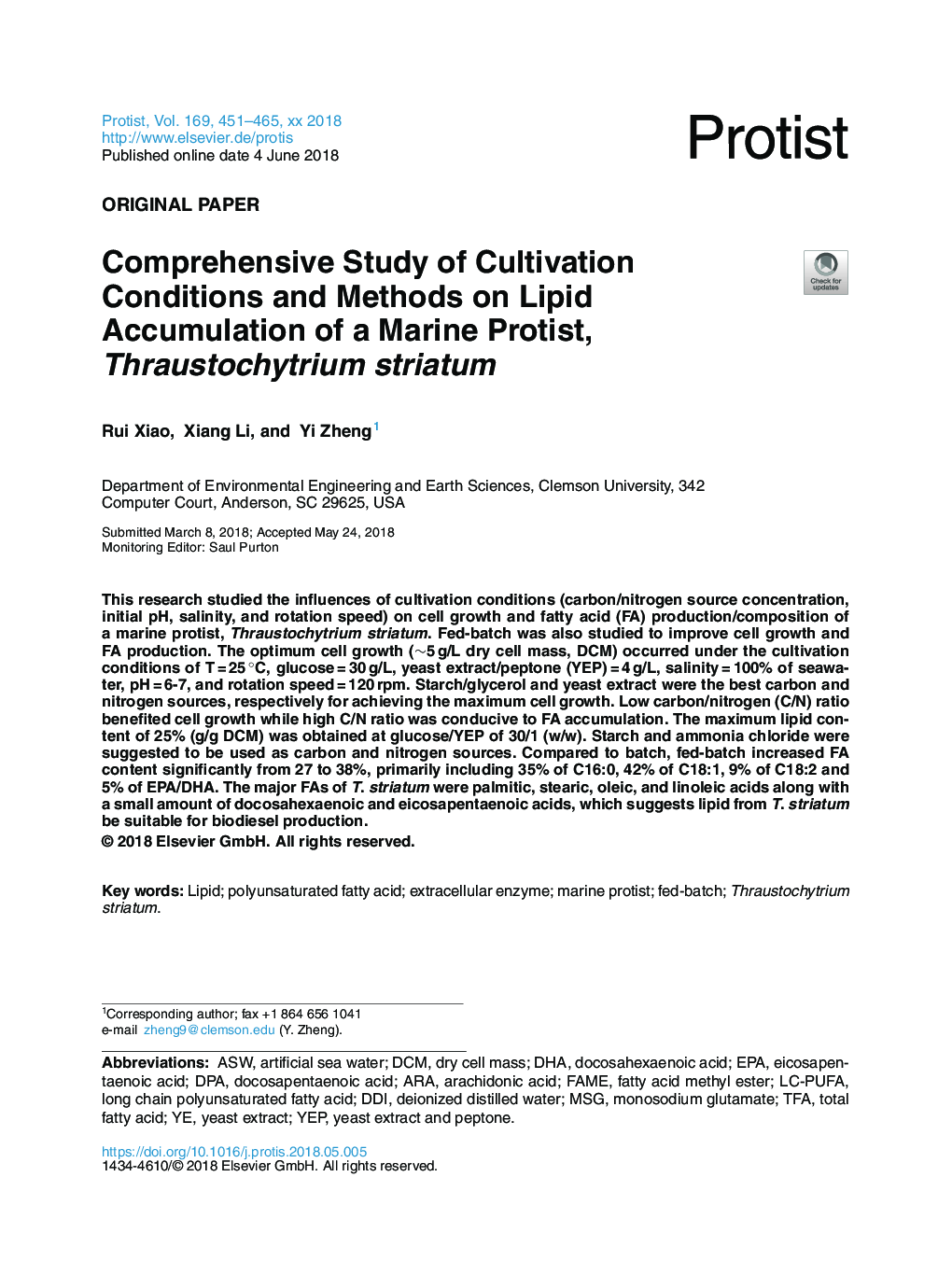| Article ID | Journal | Published Year | Pages | File Type |
|---|---|---|---|---|
| 8392708 | Protist | 2018 | 15 Pages |
Abstract
This research studied the influences of cultivation conditions (carbon/nitrogen source concentration, initial pH, salinity, and rotation speed) on cell growth and fatty acid (FA) production/composition of a marine protist, Thraustochytrium striatum. Fed-batch was also studied to improve cell growth and FA production. The optimum cell growth (â¼5 g/L dry cell mass, DCM) occurred under the cultivation conditions of T = 25 °C, glucose = 30 g/L, yeast extract/peptone (YEP) = 4 g/L, salinity = 100% of seawater, pH = 6-7, and rotation speed = 120 rpm. Starch/glycerol and yeast extract were the best carbon and nitrogen sources, respectively for achieving the maximum cell growth. Low carbon/nitrogen (C/N) ratio benefited cell growth while high C/N ratio was conducive to FA accumulation. The maximum lipid content of 25% (g/g DCM) was obtained at glucose/YEP of 30/1 (w/w). Starch and ammonia chloride were suggested to be used as carbon and nitrogen sources. Compared to batch, fed-batch increased FA content significantly from 27 to 38%, primarily including 35% of C16:0, 42% of C18:1, 9% of C18:2 and 5% of EPA/DHA. The major FAs of T. striatum were palmitic, stearic, oleic, and linoleic acids along with a small amount of docosahexaenoic and eicosapentaenoic acids, which suggests lipid from T. striatum be suitable for biodiesel production.
Keywords
yeast extract and peptoneEPADPAYEPASWDCMMSGDDILC-PUFATFAartificial sea waterdeionized distilled waterExtracellular enzymeArachidonic acidEicosapentaenoic aciddocosapentaenoic aciddocosahexaenoic acidPolyunsaturated fatty acidLong chain polyunsaturated fatty acidARADHAYeast extractFed-batchLipidFatty acid methyl esterFAME یا fatty acid methyl esters marine protistTotal fatty acidmonosodium glutamate
Related Topics
Life Sciences
Agricultural and Biological Sciences
Agricultural and Biological Sciences (General)
Authors
Rui Xiao, Xiang Li, Yi Zheng,
